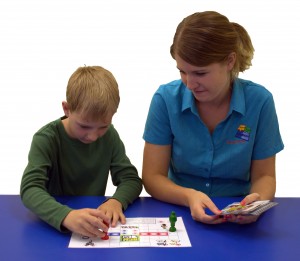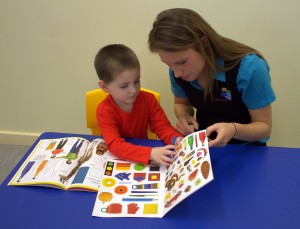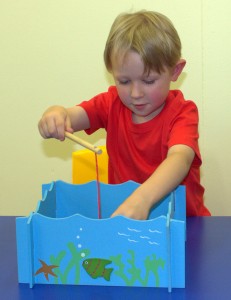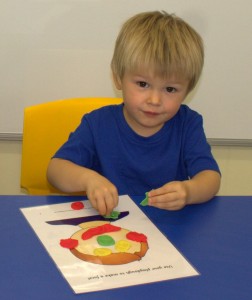
Home practice is an essential part of any therapy program. Without practice at home children often take longer to acquire new skills.
Practising your child’s speech, language or occupational therapy work at home means that therapy is much more effective. If a therapist is working with your child for half an hour a fortnight, but you do 10 minutes of practice each day, that is the equivalent of getting four extra therapy sessions per fortnight for free! In doing this your child will learn and progress much more quickly. When practicing new skills at home, you are promoting generalization of these skills to different environments other than the therapy room. The combination of direct therapy and home practice allows your child to maximize their potential.
The best way to practice is short and often. 5 to 10 minutes once or twice per day if possible. Make practice fun so your child wants to do it. Use card games, board games and reward activities such as stickers to keep your child motivated.
Remember to be positive, make working on therapy goals fun, and tell your child what they are doing right. Model mistakes back correctly so your child can hear or see the right way. Focus most on rewarding the good things they do and they will want to keep working with you. Remember to stick to the goals your therapist has set. They have been carefully chosen to help your child make the best progress.

Here are some activities to help your child practice their therapy goals. Use materials such as word cards provided by your therapist with these activities.
Lotto Game Each player has one complete page of pictures as a lotto board. Two more pages of these pictures can be cut into cards that match the lotto boards. Place the cards in a pile face down in front of the players. Each player takes it in turns to pick a card off the top of the pile, say the word practicing the target goal and matching it to the lotto board.
Memory Game Place pairs of cards face down in rows. Each player takes turns to turn over 2 cards and say the words, practicing the target sound. If the cards match, that player can keep the cards and have another turn.
Hiding Game Hide the pictures around the room and ask your child to find them. As they find each one, they have to say the name of the picture on the card. Great fun for younger kids!
Board games You can use your child’s pictures with their favourite games. Place a pile of cards face down and before each player has a turn they need to pick a card from the pile. The player then needs to say the target word before they have their turn. You can download some board games to print and play here.
Snap Use your pictures to play snap. Make sure each player says the words on the card as they turn over each picture.
Posting Post the pictures into a posting box (a gift box with a slot cut in it or an empty tissue box is fine). Your child needs to say the word on each card before they post it.
Puzzles Place a pile of cards in front of the child. Using a puzzle, tip out all of the pieces. Your child has to choose a card and say the word before they can put a piece in the puzzle.
Skittles or Bowling Stick the cards to the base or front of skittles. Have the child bowl their ball and knock over the skittles. Say the words on each skittle that has been knocked over.

Fishing Using the picture cards, attach a paper clip and use a magnet on a string to catch the “fish”. Name the pictures as they are caught. You could also make fish shapes and attach the pictures to these.
Feeding a puppet Use a puppet and the picture cards. Pretend the puppet is hungry and feed the picture cards to it. Say the words as you give the puppet each card.
Shine a torch Stick the picture cards on a wall or put them on the floor. Turn the lights down and shine a torch on the pictures as you say the words.
Bean bag toss Scatter the pictures cards on the ground. Take turns throwing a beanbag on the pictures. Name the picture the bean bag lands on. No bean bags, try rolled up pairs of socks!
Throw the dice Make a dice and stick the picture cards on each side of the dice. Take turns throwing the dice and saying the word the dice lands on. You can also use a number dice and take turns throwing the dice and saying as many words as the number you threw on the dice.
Reward sheets. There are some printable reward sheet you can download to print and play here. Say the words and stick the pieces onto the sheets. Laminate the sheets and stick the pieces on with velcro or blue tack to use them over and over.
Incorporate technology. Ask your therapist if there are any apps or computer programs that can be used to support your child's practice at home.

To find out more about children's speech, language, learning, literacy or fine motor skills check Our website. For more fun ideas follow us on Pinterest, Facebook and Twitter.
We hope you have fun sharing practice time with your child!
Related Blog Posts
If you liked this post you may also like:
Bath Time Learning
Developing Your Child's Vocabulary
Learning outdoors
Using Uno to Engage in Conversation



